Tags
Antioch, antiphonal, Basilica of Saint Peter, Bernini, Cathedra Petrii, Chair of Saint Peter, Charles the Bold, divine, doxology, Elizabeth Peterson, First Vespers, France, heaven, Holy Spirit, hymn, Italy, James T Svendsen, Jesus, keys, Latin, liturgy, Matt. 16, New Testament, parchment, Peter, Pope Benedict XVI, Pope John VIII, relic, Roman Emperor, Rome, The University of Utah, Trinity, Utah Museum of Fine Arts, Vatican
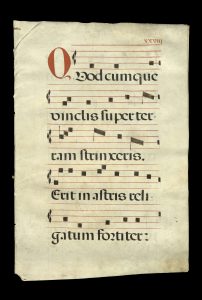
Quodcumque
vinclis super ter-
ram strinxeris,
erit in astris reli-
gatum fortiter.
And whatever with bonds
you shall have bound upon earth
will be bound strongly in heaven.
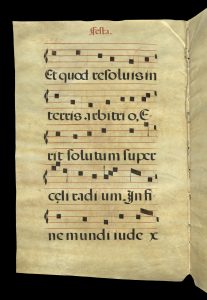
Et quod resolvis in
terris arbitrio, e-
rit solutum super radium. In fi-
ne mundi iudex
And what you unbind/loosen on earth
will be loosened upon in heaven
on your authority. At the end of
the world you will be judge
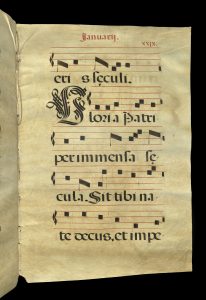
Gloria patri
per immensa se-
cula. Sit tibi na-
te decus et impe-
Glory be to the Father through all eternity
and to you, O Son, let there be grace
and domin(ion)…
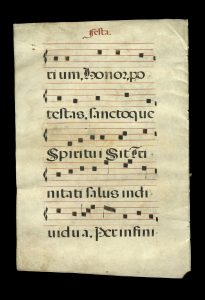
(impe)rium, honor, po-
testas Sanctoque
Spiritui sit Tri-
nitati salus indi-
vidua per infini(ta seculorum secula. Amen)
(domin)ion, power and honor
to the Holy Spirit. And let there
be to the Trinity well-being undivided forever (and ever. Amen)
This is the hymn sung at First Vespers on the Feast of the Chair of Saint Peter at Rome and Antioch and is celebrated variously but usually on February 22nd. The first passage reflects an event in the New Testament where Peter professes his faith and Jesus promises him the keys to the kingdom of heaven (Matt. 16, 19). Peter has the keys to the only gate at the entrance of heaven and the power to open or close the gate to those who would enter. The second passage is the “Gloria” and a common hymn sung on various occasions in the divine liturgy on a variety of feast days. It is called a doxology, a short hymn of praise for the Holy Trinity. The Chair of Saint Peter is a relic preserved in the Basilica of Saint Peter in the Vatican in Rome. It is called “Cathedra Petrii.” “Cathedra” the Latin word for “chair” or “throne” and refers to the chair or seat of the bishop of Rome. The wooden throne was a gift of the Roman Emperor Charles the Bold to Pope John VIII in 875. It is enclosed in a bronze gift casing by Bernini in the 17th century. In 2018 Pope Benedict XVI described the chair as a “symbol of the special mission of Peter and his Succession to tend God’s flock, keeping it unified in faith and charity.”
~Transcription, translation, and commentary by James T. Svendsen, associate professor emeritus, World Languages and Cultures, The University of Utah
MS chant frag. 8 — Parchment leaves from an Antiphonal, 16th c Italy/S. France. from the Feast of the Chair or St. Peter (18 Jan), First Vespers.
~Description by Elizabeth Peterson, associate professor, Dept. of Art & Art History, The University of Utah, from Paging Through Medieval Lives, a catalog for an exhibition held November 2, 1997 through January 4, 1998 at the Utah Museum of Fine Arts.

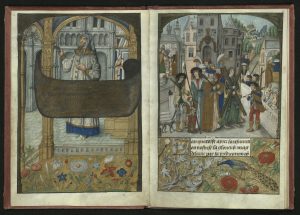

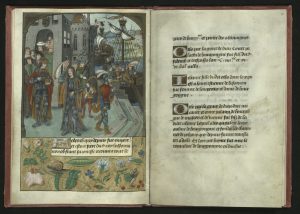
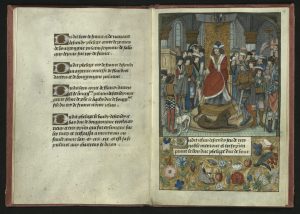
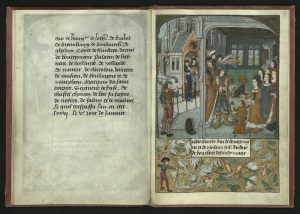
You must be logged in to post a comment.